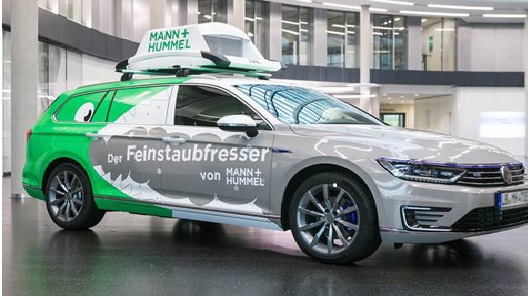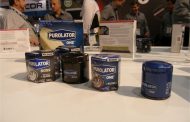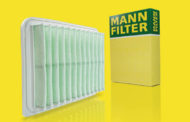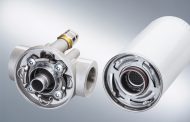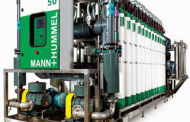One of the main issues related to living in cities is the pollution caused by high dust and toxic emissions from vehicles. With vehicular pollution being considered as a main contributory factor to this pollution, leading German filtration specialist MANN+HUMMEL has focused on research in this area and has begun field tests of several new technologies with a test vehicle.
The test vehicle was equipped with three applications that have the capability to reduce fine dust pollution. One is a filter installed on the roof that can separate particulate matter from the ambient air. Another is an innovative cabin air filter inside the vehicle. A brake dust particle filter prevents fine dust particles from entering the environment. The technologies have been extensively tested on test drives throughout the region of Stuttgart.
The low-flow resistance of the fine dust particle filter on the roof of the car facilitates excellent air throughput and a simultaneously high separation efficiency. MANN+HUMMEL conducted computer simulations which showed that particulate emissions caused by fuel combustion could be completely compensated by using the fine dust particle filter. MANN+HUMMEL will conduct further field tests under real driving conditions.
The newly developed cabin filter uses an activated carbon mix to separate toxic nitrogen oxides (NOx) and other harmful gases from the air in the cabin. The filter has an innovative coating to reliably bind high volumes of ammonia while the ultra-fine nanofibers in the inside of the filter provide protection against particulates and pollen.
The brake dust particle filter comes with strong housing that fits closely to the brake caliper, and allows the filter to capture brake dust particles at the source before they are released into the environment. According to the company’s research, the amount of fine dust caused by braking in city traffic is even more than that caused by exhaust emissions and hence the development of this brake dust particle filter could make significant impact. Though brake pads today are more environmentally friendly than they used to be in the past, over 90 percent of brake dust also comprises fine particles that can still affect our health adversely. The new brake dust particle filter can be used on all types of vehicle disc braking systems for both automotive or non-automotive applications, and for a wide range of vehicles including EVs, hybrids and internal combustion powered vehicles.
According WHO estimates, almost 47,000 people in Germany die every year from the effects of particulates and Stuttgart is one city that is known to be particularly affected with the fine dust alarm being proclaimed for 59 days in 2016, while in 2017 the fine dust alarm had already been proclaimed for 48 days in the period from January to April.
MANN+HUMMEL started working on this innovative project to reduce particulate levels as early as 2007 and has collaborated with several external partners as part of the project. In the case of the particulate filter MANN+HUMMEL worked with Albert Kamm, managing director of TEAM KAMM GmbH for expert services related to vehicle engineering and service.






